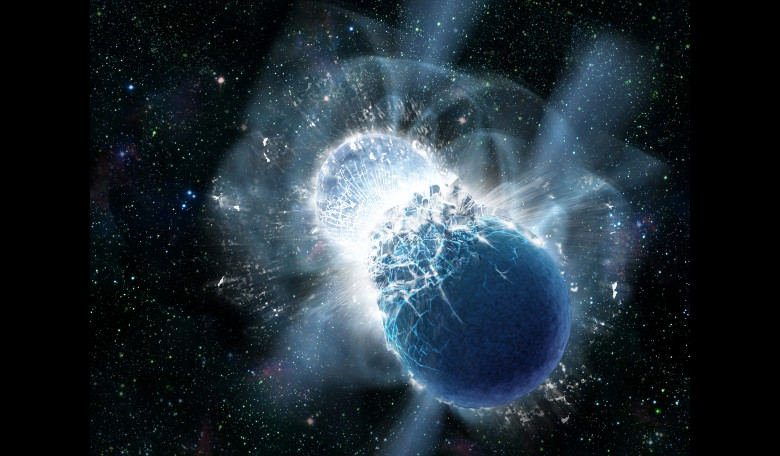In a ground-breaking announcement, the Advanced Laser Interferometer Gravitational-Wave Observatory (LIGO) and the Advanced Virgo Interferometer have once again detected gravitational waves, but this time, not from merging black holes.
In a far away galaxy – around 40 million parsecs (130 million light years) to be more precise – LIGO and Virgo have detected signals from the merger of two objects, that although are small in size (I.e in radius), they more than make up for it in mass; neutron stars. Neutron stars are the smallest, densest known stars to exist and they typically have a radius of around 10 kilometres (6.2 miles), but have masses of about twice that of the Sun (a solar mass is equal to approximately 1.99 × 1030 kilograms).
This recent event captured by LIGO and Virgo, known as GW170817, is not only significant because of the subjects that were identified, but because of what else accompanied it. Two seconds after the ripples were captured by the interferometers, a gamma-ray burst was also detected.
Gamma-ray bursts are extremely bright and energetic explosions that have been observed in distant galaxies beyond the Milky Way. It is thought that at least some gamma ray bursts are associated with supernovae, however a subclass known as short-GRBs were hypothesised to result from the merger of binary neutron stars, although not everyone agreed on this theory.
For GW170817, the gamma-ray burst was detected in gamma-rays, X-rays, optical light and infrared light, thus spanning a large portion of the electromagnetic spectrum. The nature of these radiation signatures have therefore helped support the long-standing idea that double neutron-star mergers eject radioactive material as part of a low-luminosity explosive event known as a kilonova.
This material is rich in neutrons and the ejecta undergoes rapid neutron capture nucleosynthesis (also known as the r-process), that subsequently enriches a galaxy with rare heavy elements like gold and platinum. Again, the previous culprit to explain the formation of atoms with a proton count greater than 26 fell to that of a supernova, as the energy and amount of neutrons released as the core collapses drives the necessary fusion reactions to create the heavy atoms.
But the analysis of data obtained from the GW170817 event does not stop there. Properties of GW170817 have been used to measure the Hubble Constant — a unit of measurement to describe the expansion of the universe, first proposed by Edwin Hubble after he announced in 1929, that galaxies, from all directions, appeared to be moving away from us.
GW170817 is the first gravitational-wave event with a known host galaxy (called NGC 4993) and as such, the distance to the galaxy can be used in the constant equation. Those working on data from the merger have confirmed that the constant is about 70 kilometres per second per megaparsec, a value which is consistent with previous estimates.
This unprecedented discovery is the subject of five Nature papers and one Nature Astronomy paper containing the collaborative work of 70 observatories and hundreds of astronomers around the world.











